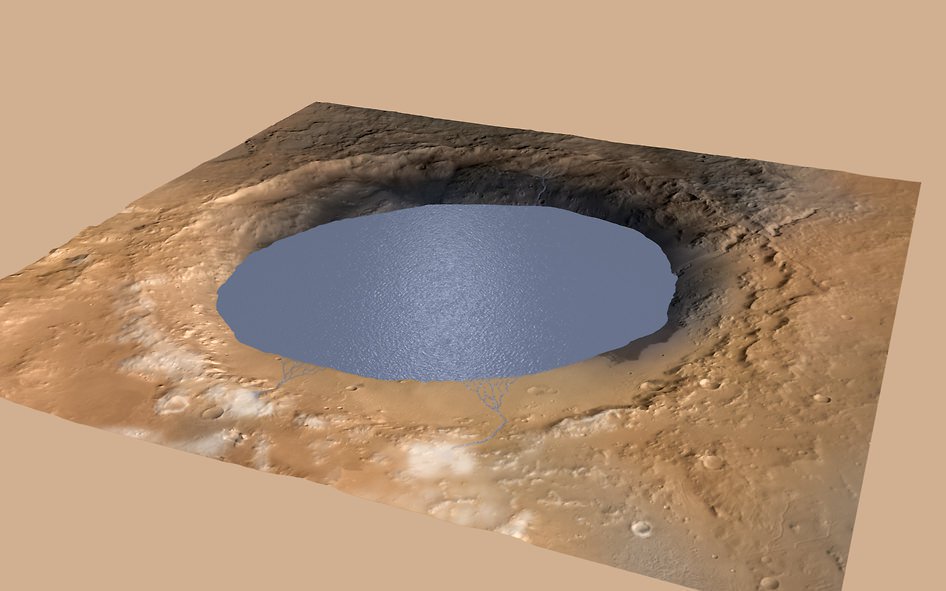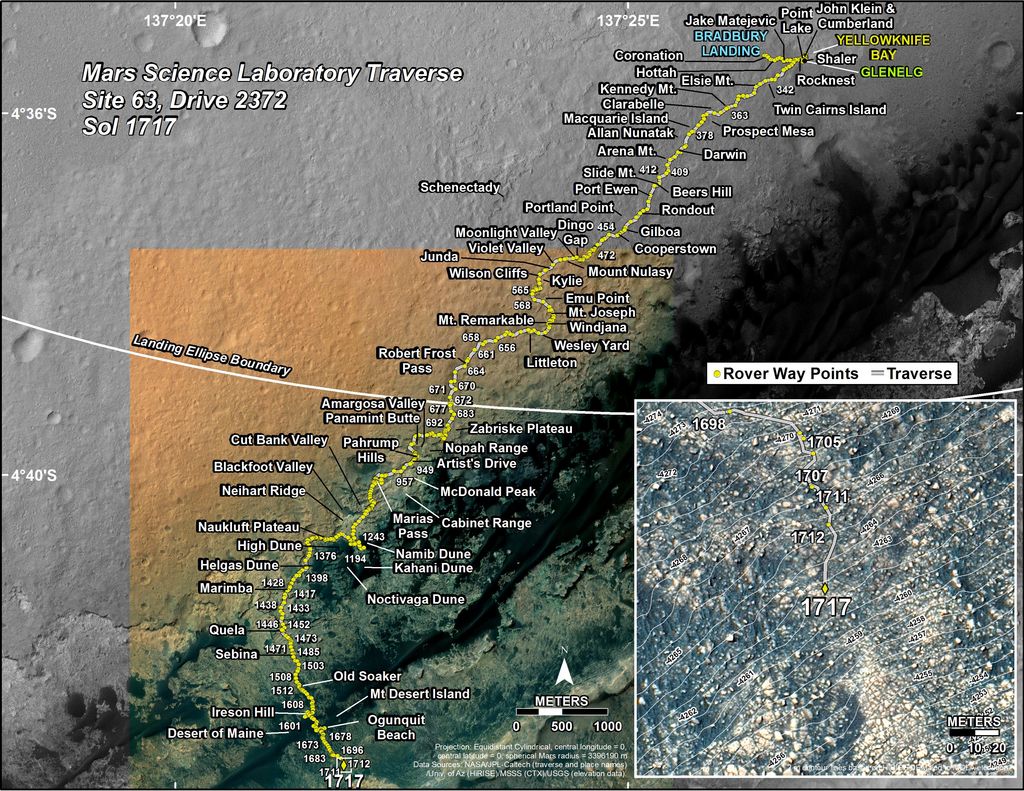Curiosity Has Despatched Again Photographs of The Good Spot to Search For Proof of Life on Mars

It is all in regards to the element.
In a approach, Mars appears like a dusty, lifeless, dry, boring planet. However science says in any other case. Science says that Mars was once moist and heat, with an environment. And science says that it was moist and heat for billions of years, simply lengthy sufficient for all times to seem and develop.
However we nonetheless do not know for certain if any life did occur there.
The scientific effort to know Mars and its historic habitability has actually ramped up lately. Now that Spirit and Alternative are gone, MSL Curiosity is carrying the workload. (NASA’s InSight lander is on Mars too, nevertheless it’s not searching for proof of life or habitability.)
MSL Curiosity is driving round Gale Crater, searching for proof that life lived there billions of years in the past. Gale Crater is a dried up lake mattress, and in line with scientists, that is the prime location to search for proof.
HiRise captured the unusual textures of the Gale Crater ground. (NASA/JPL-Caltech/Univ. of Arizona)
Christopher Home is a Professor of Geosciences at Penn State College. He is additionally a collaborating scientist with NASA’s Mars Science Laboratory mission. In a press launch from Penn State College, Home talked in regards to the MSL mission and what it is wish to be concerned every day with the ground-breaking mission.
“Gale Crater seems to have been a lake surroundings,” Home mentioned, including that the mission has discovered a variety of finely layered mudstone within the crater.
“The water would have endured for one million years or extra.”
 Simulated picture of Mar’s Gale Crater Lake. (NASA/JPL-Caltech/ESA/DLR/FU Berlin/MSSS)
Simulated picture of Mar’s Gale Crater Lake. (NASA/JPL-Caltech/ESA/DLR/FU Berlin/MSSS)
Gale Crater was chosen because the goal for Curiosity as a result of it is a advanced place. Not solely was it a lake mattress, which means there are minerals there that may yield clues to Martian habitability, however that lake was ultimately crammed with sediment.
That sediment turned to stone, which then eroded. That very same course of is what created Mt. Sharp, the mountain in the midst of Gale Crater, and one other of Curiosity’s objects of fascination.
“However the entire system, together with the groundwater that ran via it, lasted for much longer, maybe even a billion or extra years,” he mentioned.
“There are fractures crammed with sulfate, which signifies that water ran via these rocks a lot later, after the planet was not forming lakes.”
 The Base of Mount Sharp. (NASA/JPL-Caltech/MSSS)
The Base of Mount Sharp. (NASA/JPL-Caltech/MSSS)
Home works with the Mars Science Laboratory’s Pattern Evaluation at Mars (SAM) and sedimentology and stratigraphy groups. The SAM crew makes use of an instrument that heats up rock samples and a mass spectrometer to measure molecules launched by the heated samples. The mass of the molecules helps the researchers determine the forms of gases launched.
 Curiosity sampling close to the bottom of Mount Sharp. (NASA/JPL-Caltech/MSSS/Ken Kremer/Marco Di Lorenzo)
Curiosity sampling close to the bottom of Mount Sharp. (NASA/JPL-Caltech/MSSS/Ken Kremer/Marco Di Lorenzo)
Home and different scientists are notably occupied with sulfur gases from sulfate and sulfide minerals as a result of the presence of decreased sulfur minerals like pyrite, the most typical sulfide mineral, would point out that the surroundings may have supported life up to now. That is partly as a result of pyrite wants the presence of natural matter to type in sediment.
Home serves as a lead for the sedimentology and stratigraphy crew. Because the identify implies, that crew research layers of rocks on the floor of Mars to attempt to perceive the surroundings they shaped in. Home can be concerned within the rover’s tactical planning.
A couple of instances each month Home directs a each day teleconference with scientists all over the world to plan Curiosity’s operations for the subsequent day on Mars.
“It has been enjoyable to be concerned within the each day operations, selections like the place to take a measurement, or the place to drive, or whether or not we should always prioritize a specific measurement over a distinct measurement given the restricted period of time on the floor,” Home mentioned.
“Every day is restricted by the facility that the rover has and the way a lot energy the rover will want. It has been an amazing studying expertise for a way missions function and an amazing alternative to collaborate with scientists from all over the world.”
 Curiosity’s rout throughout 1717 days in 2017. (NASA/JPL-Caltech/Univ. of Arizona)
Curiosity’s rout throughout 1717 days in 2017. (NASA/JPL-Caltech/Univ. of Arizona)
Although it appears to maneuver slowly to us public observers, the tempo of Curiosity’s day-to-day operations is fast and detailed. Based on Home, we reside in a golden age of planetary science, and it is each exhilarating and bewildering.
“Every time we drive, we get up to a completely new area of view with new rocks and new inquiries to ask,” he mentioned.
“It is kind of a complete new world every time you progress, and so typically you are still desirous about the questions that have been taking place months in the past, however it’s important to cope with the truth that there’s a complete new panorama, and it’s important to do the science of that day as nicely.”
To Home, Mars is an enchanting world, and one which we have already discovered an amazing deal about. Mars remains to be a dynamic place, and we already know that it was seemingly liveable up to now.
“Missions like this have proven liveable environments on Mars up to now,” Home mentioned.
“Missions have additionally proven Mars to proceed to be an lively world with probably methane releases and geology, together with volcanic eruptions, within the not too distant previous. There’s undoubtedly nice curiosity in Mars as a dynamic terrestrial world that isn’t so totally different than our Earth as another worlds in our photo voltaic system.”
Home is true. Whereas Mars could seem dry, desolate, chilly, and lifeless, it is far more Earth-like than different worlds within the Photo voltaic System. Venus is a hellhole, Jupiter is a huge, radioactive ball of fuel, different planets and moons are frigid, lifeless locations removed from the sunshine of the Solar, and Mercury is simply, nicely… Mercury.
Curiosity and all of the work it does is regularly increasing our scientific understanding of Mars. Again in 2014, the rover detected spikes in methane, which is usually related to natural processes. Additionally in 2014, it discovered natural carbon compounds.
In 2013, the rover additionally discovered proof of an historic stream-bed on Mars, proving that there was undoubtedly water flowing on the floor up to now.
 Rounded pebbles acquired their shapes after rolling round in a long-ago river in Gale Crater. (NASA/JPL-Caltech)
Rounded pebbles acquired their shapes after rolling round in a long-ago river in Gale Crater. (NASA/JPL-Caltech)
MSL Curiosity remains to be going sturdy since touchdown on Mars in August 2012. It is preliminary mission size was focused at 687 days, nevertheless it’s nonetheless going after greater than 2500 days.
MSL has already revealed a lot about Mars, and can hold going till its radioisotope thermoelectric generator runs out of energy. Anything we study from its mission is gravy.
This text was initially revealed by Universe Right this moment. Learn the unique article.